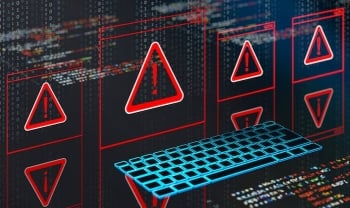Undecrypting the cybersecurity alphabet soup: MDR vs. XDR

XDR and MDR are cybersecurity solutions to enhance an organization's threat identification and response capabilities. While both solutions target the same objective, they employ different approaches.
MDR strengthens an organization's internal security team with external expertise, whereas XDR streamlines security architecture through a centralized dashboard and automation of tedious tasks.
These tools differ in their operational mechanisms and benefits, making it essential to understand their workings and determine which solution best suits an organization’s capabilities, needs, and aspirations.
What Is Extended Detection and Response (XDR)?
XDR, or Extended Detection and Response, is a powerful next-generation security solution that streamlines an organization's security infrastructure by integrating visibility across multiple security products and automating repetitive tasks.
This comprehensive approach enables security teams to investigate and address potential threats more efficiently. Organizations benefit from enhanced data visibility and valuable contextual insights with XDR solutions. XDR facilitates quicker and more effective threat responses by automatically correlating and analyzing information from various attack vectors within the organization. The ability to swiftly react to an attack minimizes the impact on day-to-day activities.
The main benefits of Extended Detection and Response are:
- Single Pane of Glass. All the security data from products are reunited under one dashboard. Then the data is analyzed automatically to provide context for security alerts.
- Detection. XDR also uses data to detect threats to determine expected behavior within the environment. Once the security tool detects a threat, it investigates its origins, tries to contain the infection, and avoids spreading to other systems.
- Response. An XDR solution can also automate the mitigation of discovered threats. The goal is to reduce the number of alerts that exhaust the security team through automation.
What Is Managed Detection and Response (MDR)?
Managed Detection and Response (MDR) is a comprehensive security-as-a-service offering that provides organizations with the specialized expertise of an external security operations center (SOC) team that provides continuous monitoring, proactive threat detection, attack mitigation, and alert investigation supported by at least endpoint detection and response (EDR) and security operations platforms.
By leveraging outsourced cybersecurity experts, MDR alleviates the monitoring and incident response responsibilities for customers and managed service providers (MSPs). MDR is invaluable in combating sophisticated attacks, offering access to advanced technology and skilled professionals to enhance security measures.
The main benefits of Managed Detection and Response are:
- Detection and Prioritization: External experts analyze all security alerts from an organization's security products, prioritizing them for efficiently handling urgent threats.
- Threat Hunting: Human threat hunting uncovers unknown threats that automated security solutions may miss, allowing for timely detection and alerting of the client organization.
- Investigation: Each security incident is thoroughly researched, providing valuable context to understand the nature of the threats, develop effective countermeasures, and ensure future protection.
- Response: External security experts take action to halt threats and provide guidance to the organization or managed service providers, managed service provider (MSP) on responding to the incident, including the eradication of threat actors and recovery measures.
XDR vs. MDR: the main two differences
Choosing the right security solution depends on your organization's specific needs.
MDR is for you if you:
- Lack in-house security expertise or resources to address advanced threats.
- Need to augment your security team's efficiency and effectiveness to combat those sophisticated threats.
- Face talent shortages or budget constraints and require the assistance of experienced professionals to close security gaps.
XDR is for you if you:
- Need to be able to detect and respond to more sophisticated threats.
- Look for ways to enhance your security team's efficiency and effectiveness.
- Need to limit alert fatigue and maximize returns on existing security investments.
- Seek faster response times, multi-layered threat analysis, and streamlined security architecture.
WatchGuard’s Unified Security Platform® approach provides an XDR solution at no additional cost: ThreatSync. Learn about WatchGuard’s Unified Security Platform approach here.
If you’re a managed service provider looking to deliver comprehensive security that is easy to consume, manage, and deliver, we recommend starting your journey by learning about the ONE Security Platform for MSPs.
WatchGuard Endpoint for SOCs enhances security teams with WatchGuard Advanced EPDR and WatchGuard Orion, and the Premium Threat Hunting Service allows our partners to provide MDR services without incurring significant investments in cybersecurity experts and infrastructure. The service capabilities are evolving drastically to provide the level of service our partners and their customers deserve to combat advanced unknown threats and close security gaps with the round-the-clock assistance of experienced professionals. Contact us at WatchGuard if you want to know more.


